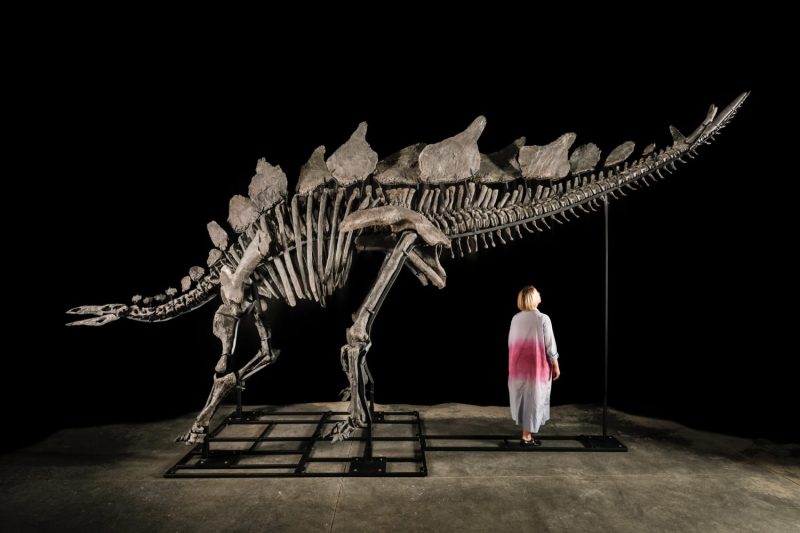In a recent record-breaking auction sale, Ken Griffin, the renowned billionaire and CEO of Citadel, made headlines by acquiring a prized stegosaurus fossil for a staggering $45 million. This transaction not only marks one of the highest prices ever paid for a dinosaur skeleton but also emphasizes the growing trend of wealthy individuals investing in rare and unique artifacts.
The stegosaurus, a prehistoric creature known for its distinctive plates and spikes, holds significant scientific and historical value. Griffin’s purchase of this fossil showcases the intersection of wealth, passion for natural history, and a desire to own exclusive pieces of the past.
Griffin, who is no stranger to high-profile acquisitions, has a reputation for collecting art, real estate, and other valuable assets. His interest in adding the stegosaurus to his collection highlights the enduring appeal of dinosaur fossils in the eyes of collectors and enthusiasts. By acquiring such a rare and iconic specimen, Griffin not only solidifies his status as a prominent figure in the world of antiquities but also contributes to the preservation and study of paleontological treasures.
The sale of the stegosaurus at $45 million sets a new benchmark for the valuation of dinosaur fossils and underscores the growing demand for such artifacts among the wealthy elite. This trend reflects a broader shift in the art and collectibles market, where unique and historically significant pieces command premium prices and draw the attention of discerning buyers looking to diversify their portfolios.
Moreover, Griffin’s acquisition of the stegosaurus brings attention to the importance of museums, research institutions, and public collections in safeguarding and sharing our collective heritage. While private collectors like Griffin play a vital role in preserving and promoting cultural treasures, it is essential that these artifacts remain accessible to the public for educational and scientific purposes.
In conclusion, the sale of the stegosaurus to Ken Griffin for $45 million represents a milestone in the world of paleontology and antiquities. This transaction not only highlights the allure of dinosaur fossils as valuable investments but also underscores the enduring fascination with our planet’s ancient past. As collectors like Griffin continue to seek out and acquire rare artifacts, it is crucial that we strike a balance between preserving cultural heritage and ensuring public access to these treasures for generations to come.
